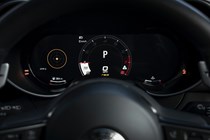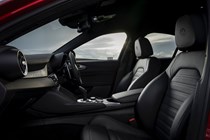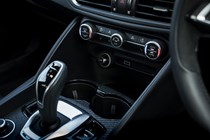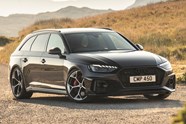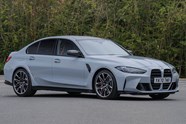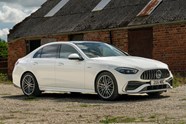
Alfa Romeo Giulia Quadrifoglio (2016-2025) review
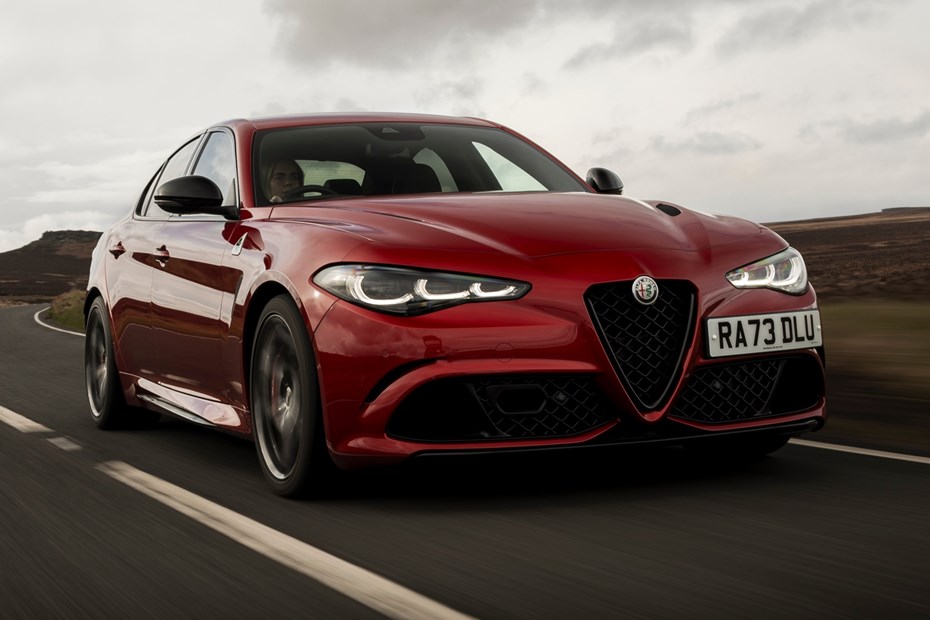
At a glance
| Price new | £63,705 - £82,205 |
|---|---|
| Used prices | £19,620 - £71,478 |
| Road tax cost | £395 - £620 |
| Insurance group | 44 - 49 |
Get an insurance quote with

|
|
| Fuel economy | 18.1 - 32.8 mpg |
| Range | 357 - 383 miles |
| Miles per pound | 2.7 - 4.8 |
| Number of doors | 4 |
| View full specs for a specific version | |
Available fuel types
Petrol
Pros & cons
- Cushioned ride
- Entertaining handling
- Sounds great
- Painfully thirsty
- Dated infotainment
- Race mode still disables the ESC
Alfa Romeo Giulia Quadrifoglio (16-25) rivals
Overview
A lot has happened since 2015, although the Alfa Romeo Giulia Quadrifoglio remains a familiar face for better and for worse. It’s long been one of our favourite performance cars for good reason, and the big news is that it still is nearly a decade after launch.
That’s impressive given that its major rivals – Audi RS4 excepted – have jumped forward a generation since the Giulia first rasped its way onto UK soil. The BMW M3 has followed much the same recipe as its predecessor with a twin-turbo inline-six but gained a significant amount of weight. It’s a similar story with the Mercedes-AMG C63, with the adoption of a plug-in hybrid enhanced four-cylinder adding even more bulk whilst delivering a far less appealing soundtrack than its V8 powered predecessors.
Thankfully, the Giulia retains its Ferrari-derived 2.9-litre V6 and remains one of the few performance saloons to weigh less than 1700kg. It’s also rear-wheel drive only, with changes designed to make it both more predictable in the bends and even more fun. The V6 now puts out 520hp, the chassis has been tweaked and crucially, there’s a new limited-slip differential that’s more consistent in its responses.
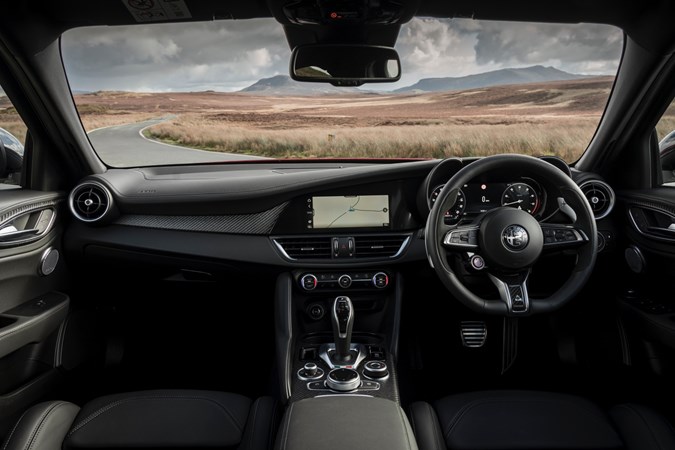
What’s it like inside?
The Giulia is a relatively compact saloon, so space is good if not brilliant. Front seat occupants are unlikely to have any issues with head, leg, or shoulder room. Move to the rear and legroom is perfectly acceptable with headroom being the issue. Shorter adults and kids will be fine, but taller folk will find hair and headlining meeting above them. The 480-litre boot isn’t a bad size, but an Audi RS4 or BMW M3 Touring will prove far more practical.
Quality is the very definition of a mixed bag. The 2023 update brings coarse-weave satin-finish carbon trims inside, while the leather seats feel supple. However, a liberal smattering of dense plastics and some very expensive-feeling alloy shift paddles for the gearbox can’t make up for some switches and plastics that could have come out of a base Giulietta hatchback (remember those?).
An old interior does mean plenty of actual buttons and switches rather than death by touchscreen. The plasticky heater controls feel cheap but work so much better than throwing them all in the infotainment system. That’s partially because the 8.8-inch screen looks tiny, has fuzzy graphics and still apes BMW’s infotainment system from a few generations ago.
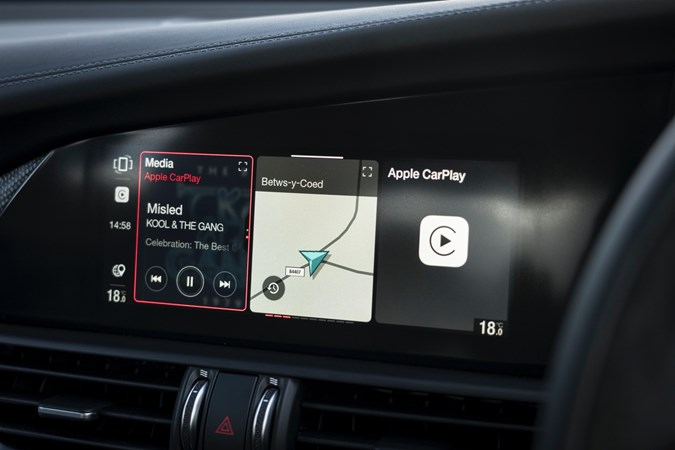
If you want more detail on the infotainment, practicality or overall quality, take a look at our main Alfa Romeo Giulia review.
Comfort
The seats are heavily bolstered to help support you in bends, yet they’re comfortable and have a good range of adjustment that’s taken care of electrically. You can drop the seat low for a racy feel, and all the major controls line up well to provide a good driving position.
Engine noise isn’t too intrusive in the lesser drive modes when you’re cruising, with a muted thrum that could pass as a three-cylinder if you were blindfolded. Dynamic mode does increase the exhaust’s noise level, leaving you in no doubt there’s a potent V6 up front.
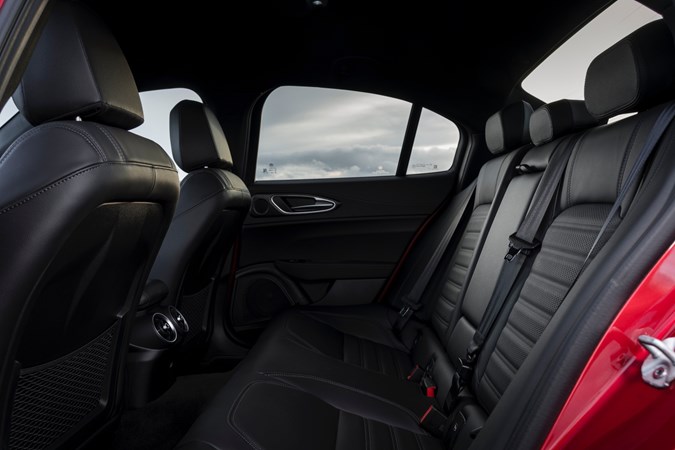
Road roar and wind noise are perfectly acceptable, too, making this a car you can comfortably cover long distances in. Just try and avoid the middle rear seat if you can; there’s no indent for your posterior and there’s a large transmission tunnel to straddle. Neither issue is unique to the Quadrifoglio, though.
Safety
The Alfa Romeo Giulia received a full five-star rating from Euro NCAP in 2016 with an impressive 98% result for adult occupants. This won’t reflect the current tougher testing regime, though.
Standard safety equipment includes a forward collision warning system, low-speed autonomous emergency braking and lane-departure warning. From 2023 all models get Matrix LED headlights, a big improvement on the previous xenons.
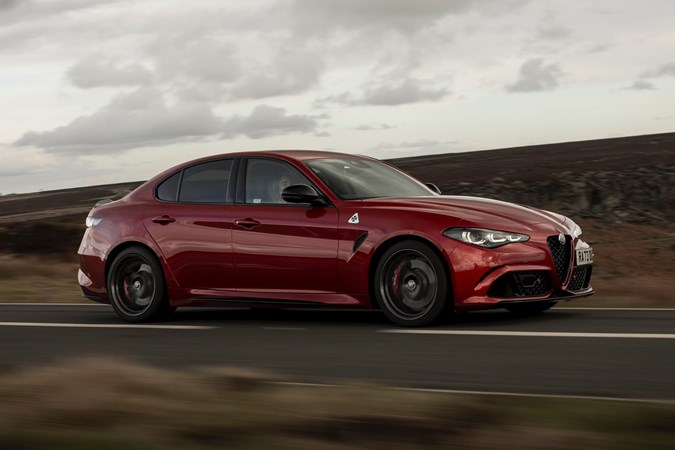
The Quadrifoglio also gets torque-vectoring (the braking of wheels to prevent wheelslip in corners) and uprated brakes with the option to specify carbon-ceramic ones at extra cost.
The ADAS (Advanced Driver Assistance Systems) collection is standard on the Giulia Quadrifoglio and includes:
- Lane keeping assist
- Active blind spot assist
- Adaptive cruise control
- Traffic sign recognition and intelligent speed control
- Traffic jam assist and highway assist (autonomous driving)
- Driver attention assist
The blind spot monitoring and adaptive cruise work well on the road. However, the lane keep assist isn’t as good as newer systems from the likes of Mercedes.
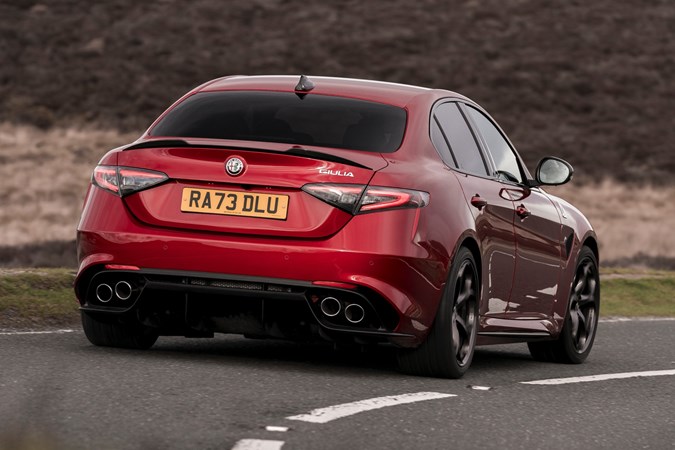
What’s it like to drive?
There’s a single choice of engine, gearbox and number of driven wheels, and that’s a 520hp, 2.9-litre, twin-turbo V6 coupled to an eight-speed automatic that powers the rear tyres. It doesn’t rev as highly as the BMW M3 or AMG C 63, yet still sounds terrific in Dynamic or Race mode and certainly delivers the performance a 3.9 second 0-62mph time would suggest.
There’s no launch control, so getting it off the line cleanly can be an issue. Once it hooks up power is plentiful when the engine is spinning past 3,000rpm and you’ll enjoy using all the available revs above that. It’s well-behaved when you’re driving sedately, playing well with the gearbox that delivers smooth shifts. A bit more urgency in Dynamic and Race mode wouldn’t go amiss, especially when you’re tugging on the tactile alloy shift paddles that make the M3 and C63’s feel like cheap toys in comparison.
As appealing as the engine is, it’s the way the Giulia Quadrifoglio gets around corners that really impresses. Changes for 2023 include a stiffer rear anti-roll bar, tweaks to the suspension settings and crucially, a mechanical limited-slip differential to replace an electronically controlled unit. This makes the rear of the Giulia far more predictable when accelerating out of the corner, with the new diff noticeably more consistent when locking up to generate more traction.
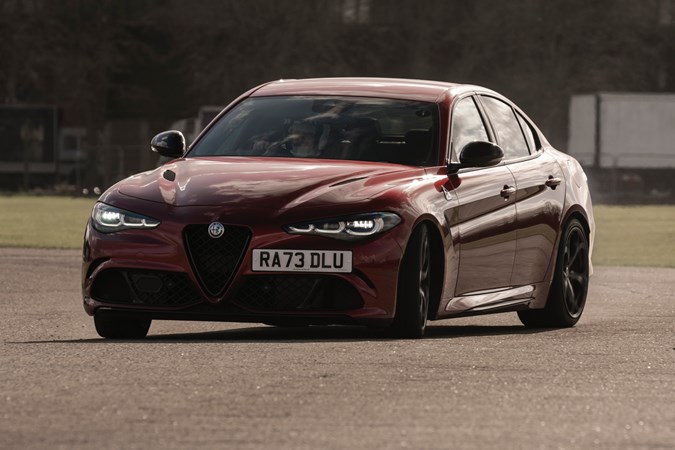
It’s good news if you keep in Dynamic mode with all the electronics on, and transformative if you’re brave enough to flick around to Race which turns off the traction and stability control. Here, the old car would sometimes spin its inside rear wheel if the diff’s electronics decided it wasn’t the time or place to do its job. Now you know both tyres will spin at roughly the same rate, increasing your confidence in the car greatly.
Race mode sets the dampers to their stiffest setting to give tight body control and sharp turn-in. We’d suggest backing the dampers off slightly using the button in the middle of the drive selector dial. It helps the car flow better along bucking British B roads while retaining good control and agility. It doesn’t feel as focussed as the M3 and it’s arguably the better road car for it.
The Giulia is certainly more comfortable if you return to Natural or All-Weather on the drive mode selector. There’s greater compliance to the suspension that makes travelling over terrible Tarmac a less jiggly experience than rivals. It doesn’t feel too harsh in the ‘mid’ damper mode, although the firmest setting is a bit too stiff for most roads.
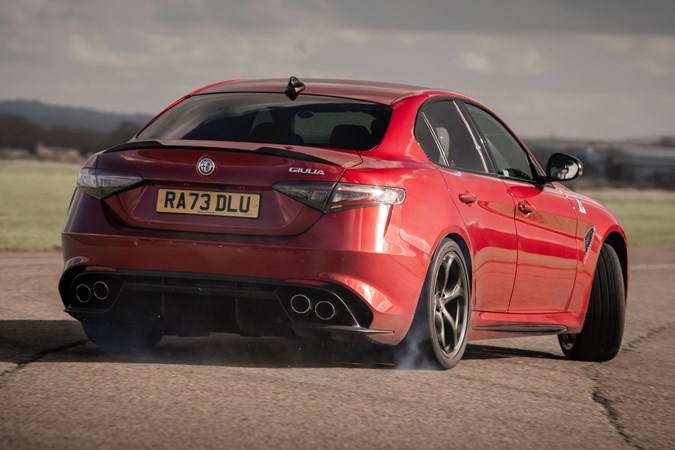
What models and trims are available?
It’s simple, there’s just one model that has a number of options available. These include lightweight wheels, carbon fibre shelled sports seats, carbon ceramic brakes, an exposed carbon fibre roof and an Akrapovic sports exhaust.
There’s also a Driver Assistance pack that brings traffic jam assist to the adaptive cruise control, intelligent speed control and a more advanced steering assist system that can guide the car between the lines on the motorway.
What else should I know?
We’d be doing you a disservice if we didn’t mention the Giulia’s prodigious thirst. Despite what the official figures say, this is a car that’ll struggle to hit mid-20s mpg if you’re driving sensibly. Enjoy yourself, and that number will tumble into the teens.









